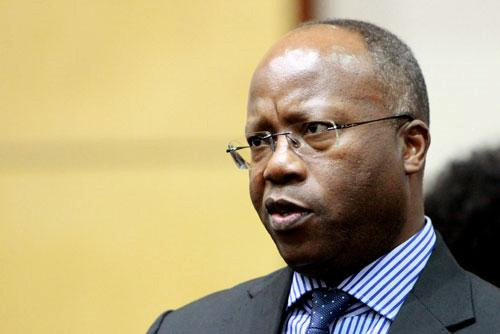A Grand Plan For Southern Africa's Infrastructure Development, But Who Will Pay For It?

Government officials in southern Africa have come up with a grand plan to improve infrastructure in the region -- but in order to secure international funding, they'll first have to prove their mettle.
The South African Development Community, or SADC, is one of the country's most powerful regional blocs. For years, it has been working on a blueprint for infrastructure development that will raise standards of living, improve cross-border trade and bolster economies. The so-called Regional Infrastructure Development Master Plan, or RIDMP, is supposed to kick off this year.
Now, SADC officials are quickly realizing that international donors and investors will need some convincing.
“Nobody has come forward to fund any of the projects we have outlined. I have been to Japan, the United States and the United Kingdom, among other countries,” said Joao Samuel Caholo, SADC deputy executive secretary for regional integration, to the IPS news agency.
The RIDMP addresses six infrastructural sectors. Information communications technology is slated to get the biggest share of funds during the initial phases, followed by transport, water, energy, tourism and meteorology. The plan is an expensive one; it's meant to be implemented over a period of 15 years and will cost hundreds of billions of dollars. For an initial payment of about $2.4 billion, SADC had planned to rely on its member states to foot 51 percent of the bill, leaving 37 percent to the private sector and 12 percent to international donors. But it's a tough sell convincing foreign partners to shell out for the SADC's own master plan; donors already fund member states directly and are not inclined to leave disbursals up to a rather unwieldy go-between.
The SADC comprises 15 member states and encompasses a highly diverse set of economies. South Africa, which boasts the continent's largest economy, plays an outsized role in organizing the bloc's initiatives. Angola, where an oil boom in recent years has ramped up investment and development, is fast becoming another power player. On the other end of the spectrum are states like the Democratic Republic of the Congo, whose central government has been weakened by decades of conflict; and Zimbabwe, where corruption and fiscal mismanagement have put a stranglehold on economic development. Tiny countries like Swaziland, Lesotho, Mauritius and the Seychelles are also members, though their fundraising capabilities are relatively small. The other members are Botswana, Madagascar, Malawi, Namibia, Mozambique, Zambia and Tanzania.
To accommodate this diversity, SADC officials came up with an RIDMP funding mechanism whereby for the first stage of funding, 49 percent of the monies to be paid by member states will be divvied up equally among them, while the remaining 51 percent would be paid according to member states' abilities. But in order to get international partner states on board, SADC will have to prove that it is capable of managing funding for such an ambitious project.
Donors would prefer that the SADC stick to an organizing role -- laying down frameworks and encouraging investment without assuming too much responsibility for the collection and disbursal of funds. But that conflicts with one of the SADC's overarching goals: promoting African solutions to African problems by minimizing the strength of Western influence.
Seeking foreign funds may seem an odd way to do that, but as SADC officials see it, exercising more control over the inflow of money is an important step on the way toward greater sovereignty. In the meantime, some of the regional economies are growing at breakneck pace -- notables include Mozambique, Tanzania, Angola and Zambia -- which could eventually lessen SADC's dependence on foreign donors.
“What is holding us back as SADC is our inability to fund our own priorities and programs," Caholo explained to IPS. "Therefore, a sustainable funding mechanism has to be established if we are to show that we are committed and progressing.”
© Copyright IBTimes 2024. All rights reserved.





















